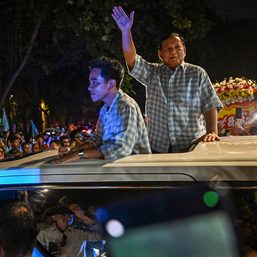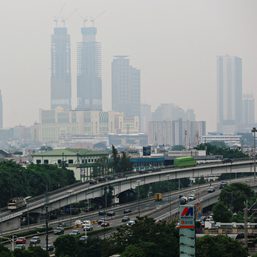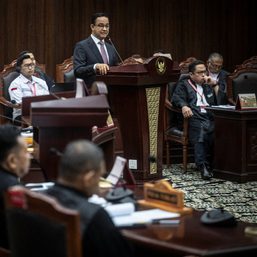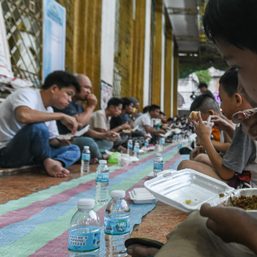SUMMARY
This is AI generated summarization, which may have errors. For context, always refer to the full article.

MANILA, Philippines (UPDATED) – When the Philippine government decided to place the entire Luzon on lockdown in mid-March, it banned non-essential travel, including the movement of millions of Filipinos who have not returned to their provinces.
On May 13, some two months since the quarantine was declared to stem the spread of COVID-19, the government released guidelines on how stranded Filipinos can return home.
The guidelines are under Memorandum No. 2020-02 of the National Task Force Against COVID-19, which was signed by its chief, Defense Secretary Delfin Lorenzana.
“The order intends to provide guidelines following a systemic and coordinated approach in facilitating and transporting locally stranded individuals (LSIs) to their respective residences,” the memorandum reads.
But with the infectious COVID-19 still spreading in the country, how will the government ensure that the homebound trips would not lead to mass infections?
We break down the 6-page memorandum below.
Who are eligible to come home?
The memorandum is intended for locally stranded individuals, who are defined as “foreign nationals or Filipino citizens in a specific locality within the Philippines who have expressed intention to return to their place of residence/home origin.”
They include the following:
- Filipino local workers
- Students
- Local or foreign tourists
- Individuals stranded in various localities while in transit
- Other stranded individuals
The memorandum is also for Returning Overseas Filipinos (ROFs), as defined by a corresponding memorandum by the Department of the Interior and Local Government (DILG) issued on May 21:
- OFWs, whether documented or non-documented
- Non-OFWs who are returning students, J1 visa holders or exchange visitor’s program beneficiaries, returning Filipino diplomats, returning Filipino tourists, participants of Philippine government-sponsored programs, and dependents and their accompanying foreign spouses.
They must have undergone 14-day quarantine before heading home, and that they are not contact, suspect, probable, or confirmed COVID-19 cases.
If the LSI has recovered from COVID-19, they must have gotten two negative results through RT-PCR tests.
Who are in charge?
The memorandum creates the Sub-Task Group on Management of Returning Overseas Filipinos and Locally Stranded Individuals (STG of ROFs and LSIs).
The task group is then further divided into two:
- Task Unit on Returning Overseas Filipinos – Focused on returning overseas filipinos
- Task unit on Locally Stranded Individuals – Focused on LSIs
All regional task forces are ordered to organize their own sub-clusters to handle returning overseas Filipinos and stranded individuals to coordinate with the national task units.
The local government units will then coordinate with their regional task forces. They cannot deny the entry of LSIs with complete requirements.
The national departments, meanwhile, have the following responsibilities:
- Department of Tourism – Provides chartered and sweeper flights for tourists considered as LSIs
- Department of Transportation – Ensures availability of transportation services to facilitate ferrying LSIs to their homes. The LGUs are ordered to assist the DOTr.
- Department of the Interior and Local Government – Ensures local government units are following the guidelines
- Department of Social Welfare and Development – Gives food assistance to LSIs
- Joint Task Force COVID Shield – Manned by cops and soldiers, they are mandated to facilitate “unhampered passage” of returning overseas Filipinos and locally stranded individuals in quarantine checkpoints as they go home.
The agencies above will work in 3 phases to send people back to their homes.
Pre-departure
- Locally stranded individuals notify the barangay where they are stranded.
- The LGU consolidates the information and sends it to the regional task forces, which coordinate with the JTF COVID Shield.
- The LGU’s health office issues a medical clearance certification to the stranded individual.
- The LGU informs the JTF COVID Shield that the stranded individual can travel by sending a notice of availability to travel.
- The JTF COVID Shield issues the travel authority for the locally stranded individuals.
Departure
- The LGU submits a list of locally stranded individuals to the DILG-OFW Desk and regional task force, 3 days before departure.
- The regional task force endorses the LSI list to the National Task Force.
- The LGU gives the medical clearance and travel authority to the stranded indiviuals.
- The JTF COVID Shield and the DOTr facilitate their travel back to their homes.
The memorandum mandates that physical distancing rules be followed for the entirety of the LSI’s journey.
Arrival
- The locally stranded individuals are isolated for check up by their home LGU.
- The local health office of the home LGU assesses the stranded individual. If COVID-19 symptoms are detected, they will be placed under quarantine, following guidelines from the Department of Health.
- If the stranded individuals have no COVID-19 symptoms, they are still required to undergo a 14-day quarantine.
- The LGU monitors their status for the 14 days of isolation.
These guidelines would still need to be matched with the internal memoranda of agencies involved in the process.
Local governments also need to do the same, leading to some localities already looking for LSIs who wish to come home, while others are still telling their residents to wait.
Read the relevant documents below:
– Rappler.com
Add a comment
How does this make you feel?





There are no comments yet. Add your comment to start the conversation.